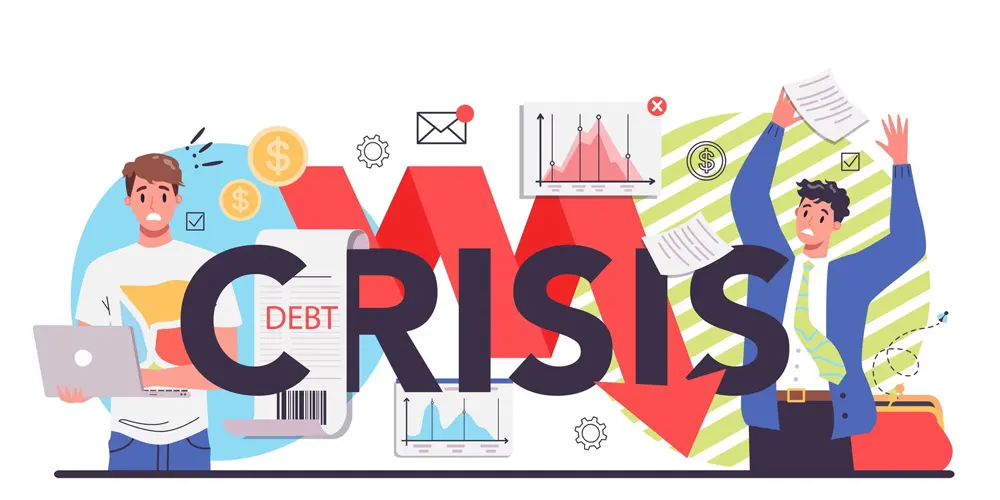The Essential Guide to Business Continuity Plans for VoIP Carriers
The world is an unpredictable place where things go wrong more often than not. Technology has progressed a lot but you still cannot predict the future certainly.
So things can and will go wrong and the only thing you can do is be prepared. If you plan and prepare well, your business won’t be impacted as negatively.
The Telecommunication Industry is very sensitive to disruptions. The world depends upon carriers to keep the world connected and communicating. Thus, suffering from downtime due to unexpected events is simply not acceptable.
Having a Business Continuity Plan in place is a solution that can not only minimize but eliminate service downtime when unforeseen circumstances occur.
As a VoIP carrier, having a BCP in place will help you minimize losses arising out of service disruptions. Moreover, no service disruptions also means no unhappy customers leaving you for your competitors.
Sounds promising? Let’s learn more about it!
What is a Business Continuity Plan (BCP)

A Business Continuity Plan (BCP) is a structured strategy designed to ensure an organization's ability to maintain essential operations and services during unforeseen disruptions or disasters.
It outlines procedures, resources, and responsibilities to minimize downtime, recover swiftly, and mitigate financial and reputational damage.
A BCP typically involves risk assessment, business impact analysis, and the development of recovery strategies.
These recovery strategies encompass data backup, communication plans, alternative work locations, and resource allocation. Regular testing and training ensure readiness.
BCPs are crucial because they safeguard a business against various threats, including natural disasters, cybersecurity breaches, or pandemics.
They help organizations meet legal and regulatory obligations while instilling confidence in customers, partners, and investors. Ultimately, a well-executed BCP preserves business continuity, limits losses, and enhances resilience in an unpredictable world.
But are Business Continuity Plans Effective? Turns out they are!
One notable example of a Business Continuity Plan (BCP) helping a business recover quickly from a threat is the case of the financial services firm Cantor Fitzgerald following the terrorist attacks on September 11, 2001, in the United States.
Background

Cantor Fitzgerald was a prominent financial services firm located in the North Tower of the World Trade Center in New York City.

On September 11, 2001, the North Tower was struck by a hijacked airplane, resulting in a catastrophic fire and eventual collapse of the building. The attack claimed the lives of 658 Cantor Fitzgerald employees, which was a devastating loss.
Business Continuity Plan Implementation
Cantor Fitzgerald had a robust BCP in place, which included measures for data redundancy, backup sites, and disaster recovery planning.
Here's how their BCP played a crucial role.
- Data Redundancy - The firm had a remote data center in Rochelle Park, New Jersey, where critical data was continuously mirrored.
This redundancy ensured that even with the loss of their primary data center in the North Tower, essential financial data was preserved.
- Backup Work Sites - Cantor Fitzgerald had established alternate trading facilities in other locations, including London. These backup trading facilities allowed the company to resume critical trading operations almost immediately after the attack.
- Quick Recovery - The company activated its BCP within hours of the attack. Employees who survived or were working off-site were able to connect to the backup systems and continue operations.
Outcome

Cantor Fitzgerald's BCP allowed the company to recover quickly, maintain its business operations, and continue trading. Their ability to restore critical financial data and trading capabilities was remarkable, given the magnitude of the disaster.
This played a crucial role in preserving the company's reputation and financial stability during a time of extreme uncertainty in the financial markets.
Cantor Fitzgerald suffered a tragic loss of personnel. However, their BCP demonstrated the importance of comprehensive planning and redundancy in ensuring business continuity, even in the face of a devastating and unexpected threat.
This example underscores the critical role that BCPs can play in helping businesses recover swiftly from disruptions.
The Relevance of BCPs for VoIP Carriers

Having a Business Continuity Plan (BCP) is highly relevant for VoIP (Voice over Internet Protocol) carriers due to several specific reasons:
1. Critical Communication Services - VoIP carriers provide essential communication services to businesses and individuals. Any disruption in their services can have far-reaching consequences, including impaired emergency services, customer communication, and business operations.
2. Dependency on Technology - VoIP carriers rely heavily on technology and network infrastructure. Technical failures, cyberattacks, or natural disasters can quickly disrupt their operations, making a BCP essential to ensure service continuity.
3. Regulatory Compliance - VoIP carriers often operate under strict regulatory frameworks. Many regulations mandate the implementation of BCPs to ensure service availability and data protection, failure to comply can result in penalties.
4. Competitive Advantage - Carriers with robust BCPs can assure their customers of uninterrupted service. This will grant them a competitive edge and help maintain trust with customers during crises.
5. Risk of Cyber Attacks - VoIP systems are vulnerable to cyber threats. Bad actors are aware of the amount of sensitive information that gets exchanged over calls.
A BCP helps in promptly responding to and recovering from cyberattacks, minimizing data breaches and service outages.
6. Natural Disasters - VoIP carriers may have data centers and infrastructure susceptible to natural disasters like earthquakes or hurricanes. BCPs include disaster recovery plans to minimize downtime even in case data centers are lost to disasters.
7. Legal Obligations - Depending on their location and the markets they serve, VoIP carriers may be legally obligated to have BCPs in place. This is necessary to protect their customers and ensure the availability of emergency services like 911.
A BCP for VoIP carriers is essential not only to mitigate risks and maintain service continuity but also to comply with regulations. Additionally, it safeguards their reputation and helps them stay competitive in a dynamic and technology-driven industry.
Why Every VoIP Carrier Needs a Business Continuity Plan?
A plain and simple reason to have a BCP is that things go wrong and you wouldn't want the flow of calls to stop. Nothing is more damaging to a VoIP Carrier’s business than service unavailability and disruptions.
Risks and Vulnerabilities in the VoIP Industry

There are several specific risks and vulnerabilities that VoIP Carriers need to consider. These threats are what warrant having a BCP in place. These threats include:
1. Network Failures - VoIP services heavily rely on network infrastructure and internet connectivity. Any network outages, whether due to technical issues or cyberattacks, can disrupt voice communication services.
2. Cybersecurity Threats - VoIP systems are susceptible to various cyber threats, including hacking, phishing, and Distributed Denial of Service (DDoS) attacks. A breach in the security of VoIP systems can compromise data and service availability.
3. Quality of Service (QoS) Issues - Maintaining a high level of call quality is essential for VoIP providers. Network congestion, latency, or packet loss can lead to poor call quality, affecting customer satisfaction.
4. Natural Disasters - Data centers and infrastructure used by VoIP carriers may be vulnerable to natural disasters such as earthquakes, hurricanes, or floods. These events are sudden, and unexpected and can cause service disruptions and data loss.
5. Regulatory Compliance - VoIP providers often need to comply with regulations, including providing access to emergency services like 911. Non-compliance can result in legal and regulatory consequences.
6. Dependency on Third-Party Providers - Many VoIP carriers rely on third-party vendors for various services and technologies. Disruptions or failures in these vendor services can affect the VoIP provider's operations.
7. Human Error - Mistakes made by employees or human error can also disrupt VoIP services. These errors may include misconfigurations, accidental data deletions, or accidental service interruptions.
8. Capacity and Scalability Challenges - VoIP carriers must manage capacity and scalability to handle growing customer demand. Inadequate planning can lead to service degradation during peak usage periods.
Understanding these risks and vulnerabilities is critical when defining the scope of a BCP for the VoIP industry. A well-prepared BCP should ensure that VoIP carriers can maintain essential operations and communication services at all times.
Legal and Regulatory Requirements

Legal and regulatory requirements for Business Continuity Plans (BCPs) can vary significantly from one country to another. Another factor that determines these requirements is the industry and specific customers you choose to serve.
I can provide a general overview of these requirements. It's essential to consult legal experts or regulatory authorities in specific regions or industries for precise and up-to-date information.
Here are some general considerations.
1. United States
Federal Communications Commission (FCC) - Telecommunications providers, including VoIP carriers, in the U.S. are subject to FCC regulations. They may be required to have BCPs in place, especially if they offer services like 911 access.
HIPAA (Health Insurance Portability and Accountability Act) - Healthcare organizations using VoIP for patient communication must adhere to HIPAA regulations. HIPAA mandates BCPs to safeguard patient data.
2. European Union (EU)
General Data Protection Regulation (GDPR) - Organizations handling personal data, including VoIP carriers, must have data protection measures in place.
While not explicitly requiring a BCP, GDPR indirectly promotes data recovery and protection strategies. As these functions are already a part of BCP, you may as well create and benefit from a full-fledged BCP.
3. Canada
Canadian Radio-television and Telecommunications Commission (CRTC) - Similar to the USA, VoIP service providers in Canada who are providing services to emergency service providers are required to have a BCP in place as per the CRTC regulations.
4. United Kingdom
Ofcom - VoIP providers may need to follow Ofcom regulations regarding service quality and emergency services access. This in turn involves BCP-related requirements if you’re serving specific sectors or the NHS.
5. India
Telecom Regulatory Authority of India (TRAI) - VoIP providers operating in India must comply with TRAI regulations. As per these regulations and similarly to others we’ve observed, BCP is necessary if you want to service sectors such as healthcare or emergency services.
It's important to note that these regulations can change over time, and different states or provinces within countries may have additional requirements. VoIP carriers should proactively monitor and adhere to the legal and regulatory requirements.
Final Word
Service Unavailability and Disruptions hurt. In the best possible cases, you may get off with heavy business losses. However, if you’re servicing industries sensitive to disruptions and protected by regulations, things can go from bad to worse quickly.
Even if we disregard the legal and regulatory requirements, having a Business Continuity Plan in place offers significant benefits to VoIP operators.
You’re not only able to mitigate losses arising out of service disruptions but also able to benefit from the competitive edge it affords you.
If you want to learn more about BCP for VoIP, stay tuned for updates and blogs!
























































































































